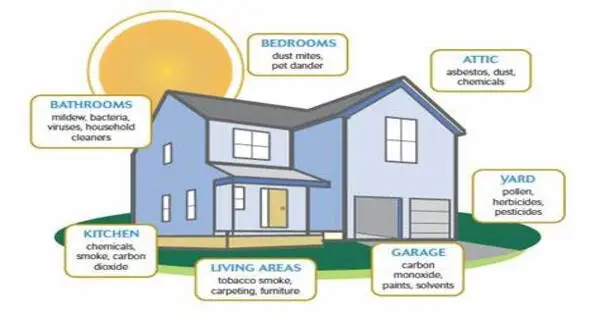Household air pollution (HAP) is the contamination of indoor air in household settings caused by a variety of causes, including cooking, heating, lighting, and smoking. It is a significant source of indoor air pollution, primarily due to cooking and heating methods used in developing countries.
Because majority of the cooking is done with biomass fuel, such as wood, charcoal, dung, and crop residue, in indoor situations with inadequate ventilation, millions of people, mostly women and children, suffer serious health concerns. This problem affects an estimated three billion individuals in developing countries. It causes serious health dangers, especially in developing nations where traditional methods of cooking and heating with solid fuels such as wood, coal, dung, or agricultural leftovers are common.
The World Health Organization (WHO) estimates that cooking-related pollution causes 3.8 million annual deaths. The Global Burden of Disease study estimated the number of deaths in 2017 at 1.6 million. The problem is closely related to energy poverty and cooking.
Here are some key points about household air pollution:
- Sources: Cooking with solid fuels on open fires or traditional stoves is the primary source of HAP. Other sources include heating with solid fuels, kerosene, or gas heaters, indoor smoking, use of certain building materials, and inadequate ventilation.
- Health Effects: Prolonged exposure to household air pollution can lead to a range of health problems, including respiratory infections, chronic obstructive pulmonary disease (COPD), asthma, lung cancer, heart disease, low birth weight, and even premature death, particularly among women and children who spend more time indoors.
- Vulnerable Populations: Women and children are disproportionately affected by HAP due to their increased exposure during cooking and caregiving activities. Additionally, individuals with pre-existing respiratory conditions or compromised immune systems are at higher risk.
- Interventions: Several interventions can help mitigate household air pollution and its health impacts. These include promoting the use of cleaner cooking technologies such as improved cookstoves, transitioning to cleaner fuels like liquefied petroleum gas (LPG) or biogas, enhancing ventilation in households, promoting smoke-free environments, and raising awareness about the health risks associated with HAP.
- Global Impact: Household air pollution is a significant global health issue, especially in low- and middle-income countries where access to clean cooking technologies and fuels is limited. According to the World Health Organization (WHO), around 3 billion people worldwide still rely on polluting fuels for cooking and heating.
Smoke from traditional residential solid fuel burning often contains a wide range of incomplete combustion products, such as fine and coarse particulate matter (e.g., PM2.5, PM10), carbon monoxide (CO), nitrogen dioxide (NO2), sulfur dioxide (SO2), and a variety of organic pollutants.
Technology-based solutions to this problem typically center on the delivery of improved cookstoves, although behavioral improvements can also be significant.
Efforts to reduce home air pollution frequently combine policy measures, technology improvements, behavioral changes, and community engagement. It is possible to lessen the burden of disease linked with HAP while also enhancing the general well-being of afflicted populations by increasing access to clean energy alternatives and fostering healthy household practices.
















